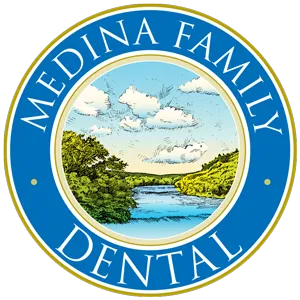PORCELAIN VENEERS
PORCELAIN VENEERS
Veneers are very thin pieces of durable, tooth shaped porcelain that are custom made (for shape and color) by a professional dental laboratory. They are bonded onto the front of teeth to create a beautiful and attractive smile.
Veneers can completely reshape your teeth and smile. They can often be alternatives to crowns and the ideal solution in treating many dental conditions.
As with most dental restorations, veneers are not permanent and may someday need replacement. They are very durable and will last many years, giving you a beautiful long lasting smile.
Reasons for porcelain veneers:
Veneers are very thin pieces of durable, tooth shaped porcelain that are custom made (for shape and color) by a professional dental laboratory. They are bonded onto the front of teeth to create a beautiful and attractive smile.
Veneers can completely reshape your teeth and smile. They can often be alternatives to crowns and the ideal solution in treating many dental conditions.
As with most dental restorations, veneers are not permanent and may someday need replacement. They are very durable and will last many years, giving you a beautiful long lasting smile.
Reasons for porcelain veneers:
Cosmetically, to create a uniform, white, beautiful smile
Crooked teeth
Misshapen teeth
Severely discolored or stained teeth
Teeth that are too small or large
Unwanted or uneven spaces
Worn or chipped teeth
Cosmetically, to create a uniform, white, beautiful smile
Crooked teeth
Misshapen teeth
Severely discolored or stained teeth
Teeth that are too small or large
Unwanted or uneven spaces
Worn or chipped teeth
What does getting porcelain veneers involve?
What does getting porcelain veneers involve?
Getting veneers usually requires two visits to complete the process, with little or no anesthesia required during the procedure. The teeth are prepared by lightly buffing and shaping the surface to allow for the thickness of the veneer. A mold or impression of the teeth is taken and a shade (color) will then be chosen by you and the dentist.
On the second visit the teeth will be cleansed with special liquids to achieve a durable bond. Bonding cement is then placed between the tooth and veneer and a special light beam is used to harden and set the bond.
You will receive care instructions for veneers. Proper brushing, flossing and regular dental visits will aid in the life of your new veneers.
Getting veneers usually requires two visits to complete the process, with little or no anesthesia required during the procedure. The teeth are prepared by lightly buffing and shaping the surface to allow for the thickness of the veneer. A mold or impression of the teeth is taken and a shade (color) will then be chosen by you and the dentist.
On the second visit the teeth will be cleansed with special liquids to achieve a durable bond. Bonding cement is then placed between the tooth and veneer and a special light beam is used to harden and set the bond.
You will receive care instructions for veneers. Proper brushing, flossing and regular dental visits will aid in the life of your new veneers.
Bleeding gums– Gums should never bleed, even when you brush vigorously or use dental floss.
Loose teeth– Also caused by bone loss or weakened periodontal fibers (fibers that support the tooth to the bone).
New spacing between teeth– Caused by bone loss.
Persistent bad breath– Caused by bacteria in the mouth.
Pus around the teeth and gums– Sign that there is an infection present.
Receding gums– Loss of gum around a tooth.
Red and puffy gums– Gums should never be red or swollen.
Tenderness or Discomfort– Plaque, calculus, and bacteria irritate the gums and teeth.
Removal of calculus (tartar): Calculus is hardened plaque that has been left on the tooth for some time and is now firmly attached to the tooth surface. Calculus forms above and below the gum line and can only be removed with special dental instruments.
Removal of plaque: Plaque is a sticky, almost invisible film that forms on the teeth. It is a growing colony of living bacteria, food debris, and saliva. The bacteria produce toxins (poisons) that inflame the gums. This inflammation is the start of periodontal disease!
Teeth polishing: Remove stain and plaque that is not otherwise removed during tooth brushing and scaling.
RELATED PROCEDURES
RELATED PROCEDURES
What is Periodontal (Gum) Disease?
Diagnosis
Treatment
Maintenance
What is Periodontal (Gum) Disease?
Diagnosis
Treatment
Maintenance
RELATED PROCEDURES
Dental Exams & Cleanings
Dental X-rays
Home Care
How to Properly Brush & Floss
Schedule A Visit With Us Today!
Questions?
Give us a call today!
Address:
1313 Petersburg Street
Castroville, Texas 78009
Email:
Hours:
Monday - Thursday 8am to 5pm
Closed Friday - Sunday
© 2025. Medina Family Dental.
All Rights Reserved. Opt-In Form.


